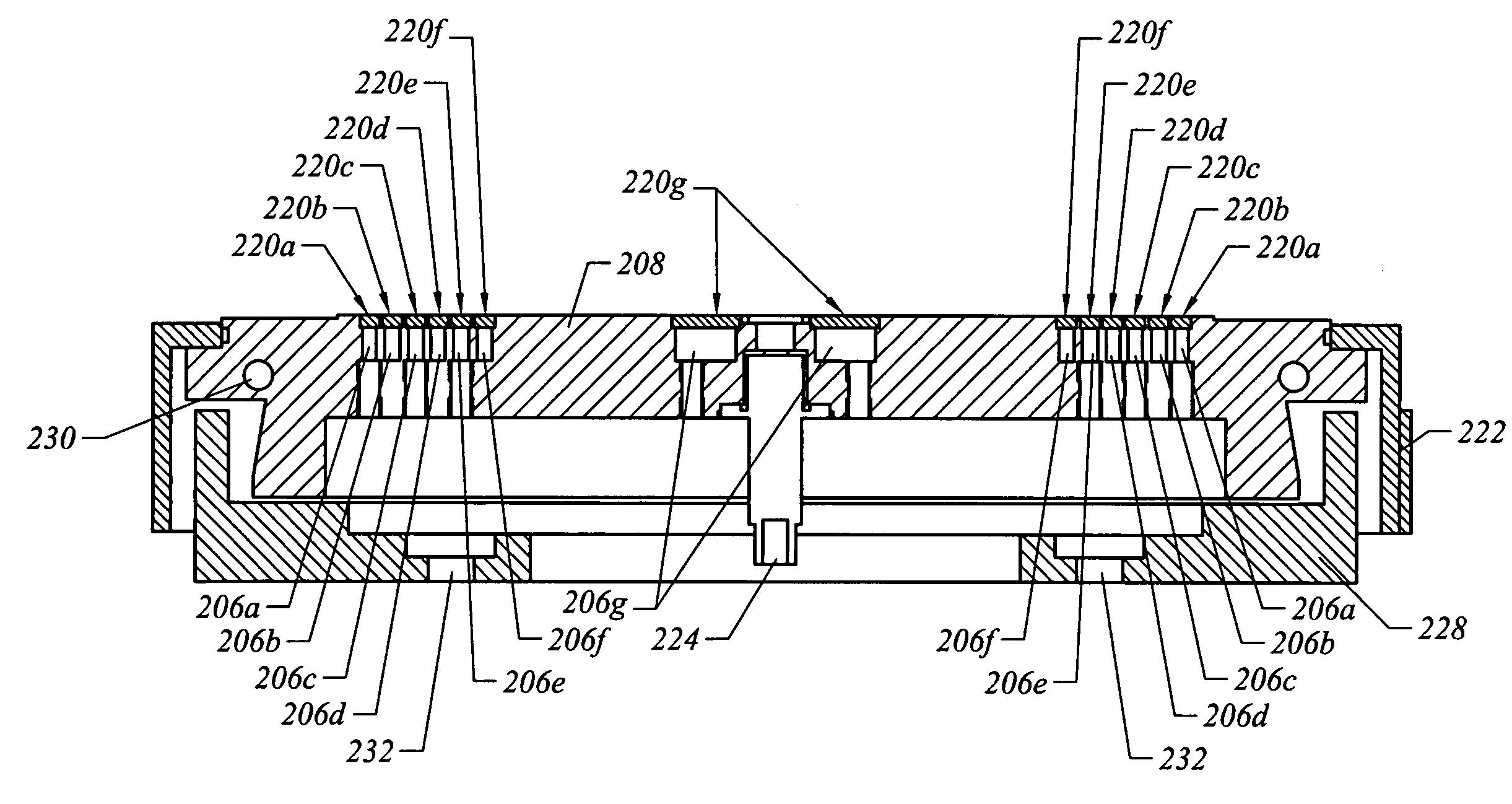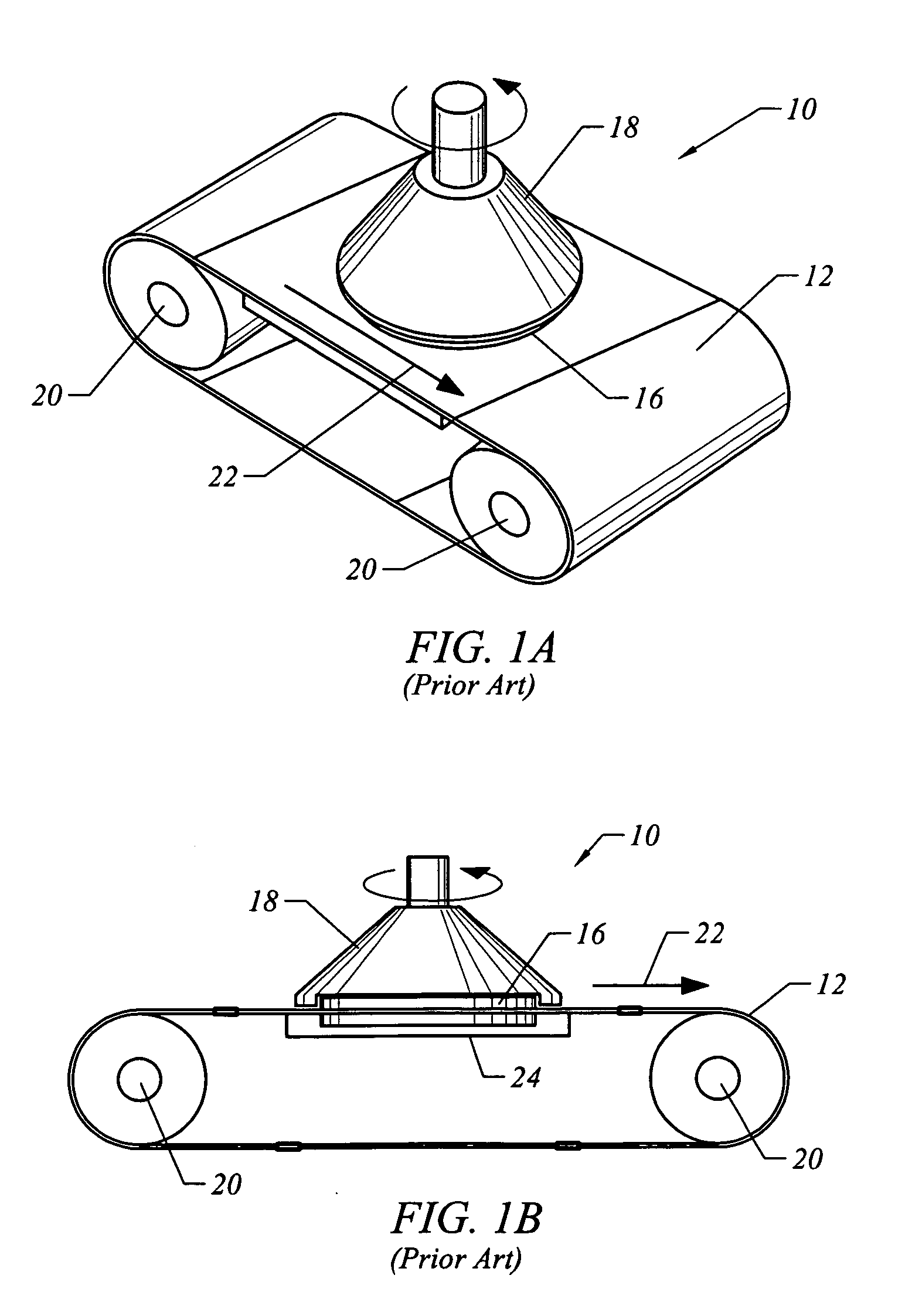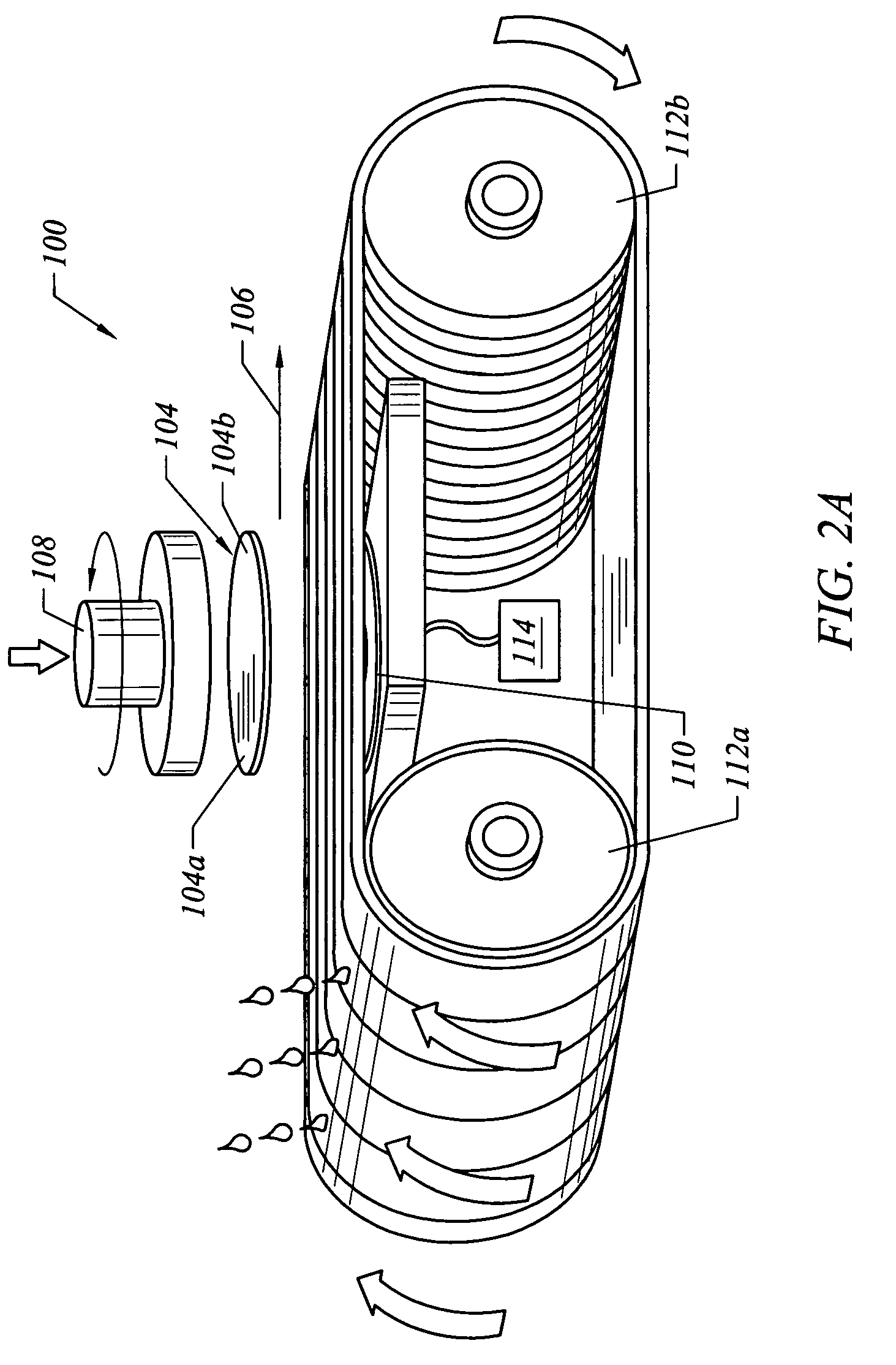Porous material air bearing platen for chemical mechanical planarization
- Summary
- Abstract
- Description
- Claims
- Application Information
AI Technical Summary
Benefits of technology
Problems solved by technology
Method used
Image
Examples
Embodiment Construction
[0023]Several exemplary embodiments of the invention will now be described in detail with reference to the accompanying drawings. FIGS. 1A and 1B are discussed above in the “Background of the Invention” section.
[0024]In summary, a platen for use in chemical mechanical planarization includes a platen plate with a plurality of recesses. A porous material is disposed over the recesses so optimal air pressure may be maintained on an underside of a polishing belt during CMP operations without consumption of large amounts of air. The porous material has a porosity sufficient to restrict air flow through it so as to reduce air usage for CMP operations. Therefore, the polishing pressure on wafers may be optimized and air consumption is dramatically reduced.
[0025]It should be understood that the platen described herein may be utilized to optimize air usage and to generate optimal air pressure on any suitable polishing pad structure such as, for example, a linear polishing belt. The platen ma...
PUM
 Login to View More
Login to View More Abstract
Description
Claims
Application Information
 Login to View More
Login to View More - R&D
- Intellectual Property
- Life Sciences
- Materials
- Tech Scout
- Unparalleled Data Quality
- Higher Quality Content
- 60% Fewer Hallucinations
Browse by: Latest US Patents, China's latest patents, Technical Efficacy Thesaurus, Application Domain, Technology Topic, Popular Technical Reports.
© 2025 PatSnap. All rights reserved.Legal|Privacy policy|Modern Slavery Act Transparency Statement|Sitemap|About US| Contact US: help@patsnap.com



